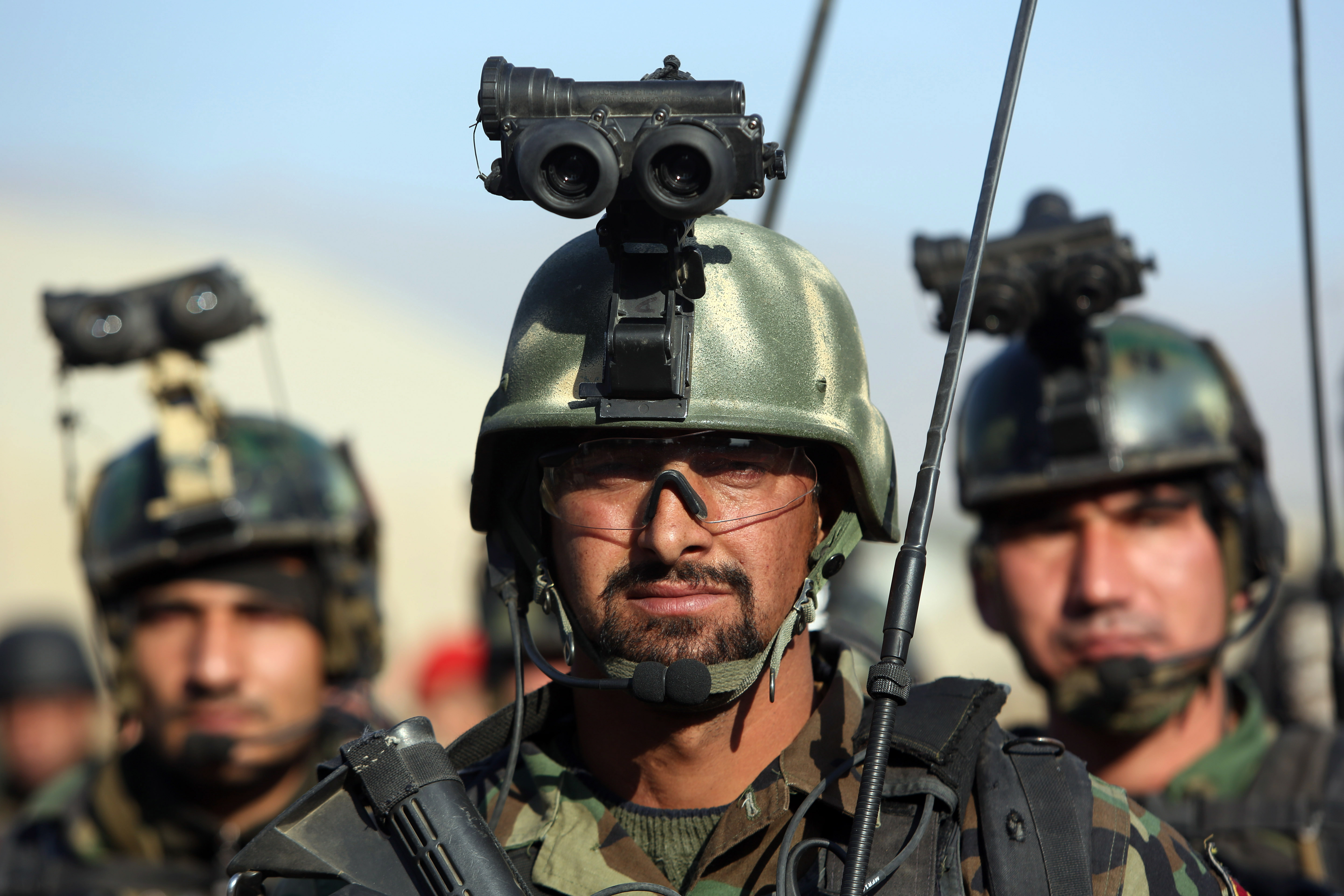How Is American Money Being Spent on Afghan Security Forces? It’s Classified

Afghan security forces attend a ceremony in Laghman province, east of Kabul, Afghanistan, Sunday, Jan. 11, 2015. The 13-year international mission led by the United States and NATO ended on Dec. 31 with Afghan forces now in charge of national security in the midst of an intensified Taliban insurgency. (AP Photo/Rahmat Gul)
(Update: The U.S. command in Afghanistan has partially reversed its decision to classify certain data. You can read our story about the reversal here.)
The United States Congress has appropriated nearly $65 billion towards training Afghan security forces since 2002 — but how that money is spent just got a lot more difficult to track.
The American command in Afghanistan has decided to classify details on how money is being used, according to a quarterly report released on Thursday by the Special Inspector General for Afghanistan Reconstruction (SIGAR).
SIGAR described the move, which means the data would be published in a classified appendix available only to Congress, as “unprecedented.”
“The decision leaves SIGAR for the first time in six years unable to publicly report on most of the U.S.-taxpayer-funded efforts to build, train, equip, and sustain the [Afghan National Security Forces],” John Sopko, the inspector general, wrote in the report.
In a letter to SIGAR, Gen. John Campbell, the commander of coalition forces, said his decision was driven by security concerns.
“While I cannot comment upon the precise reason why certain information was considered unclassified in the past, I can advise that given the risks that continue to exist to our forces and those of Afghanistan, I have directed that sensitive operational information or related materials, that could be used by those who threaten the force, or Afghan forces, be classified at an appropriate level,” he wrote.
“For years, this kind of information has been available,” Steven Aftergood, director of the Federation of American Scientists Project on Government Secrecy, told FRONTLINE. “It’s not just a particular fact or figure that’s being classified, but whole categories of previously public information. That is both stunning and disturbing.”
“His justification is basically a statement that security requires greater secrecy,” Aftergood said. “It’s blatantly inconsistent, and I would say disproven by past practice. There’s no indication that previous disclosures of budgeting or contracting practices every created a security threat.”
Afghanistan has seen a rise in Taliban attacks over the last year as coalition forces prepared to withdraw from the country. The number of Afghan security personnel killed in action increased 6.5 percent from 2013 to 2014, while the U.N. mission in Afghanistan counted 3,188 civilian deaths from January to November 2014, a 19 percent increase from the same period in 2013.
SIGAR’s Twitter account gave examples of the kinds of information that are now classified: Data on the Afghan army and police, data on the amount of money the U.S. spent to feed the Afghan army, and even the cost of literacy training programs.





